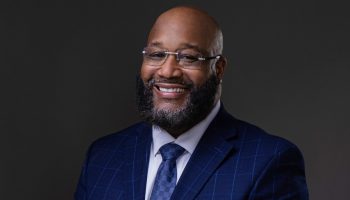The judiciary is the smallest, least financially burdensome and, arguably, the most influential of the three branches of our government. At its apex is the Supreme Court, nine individuals supported by a small cadre of law clerks and a very modest clerical bureaucracy. A few words about the court’s history, statistics and demographics may help to understand what the court is today and likely to be in the future.
The judiciary is described in four short paragraphs in Article III of the Constitution. In brief, the “judicial power of the United States shall be vested in one Supreme Court, and in such inferior courts as the Congress may from time to time ordain and establish.” Justices are nominated by the president, appointed with the consent of the Senate, and hold their offices during good behavior — construed generally as life tenure. The court decides “cases and controversies,” typically involving the Constitution or laws of the United States. The number of justices on the court is fixed by statute; nine since 1869.
The Supreme Court renders about 75 decisions every year (down from 150 30 years ago — and only 62 this year) that affect nearly every aspect of our lives. In the past few years alone, these have included the death penalty; prison sentences; voting rights; freedom of speech, press, assembly and religion; congressional redistricting; searches, seizures, arrests and trials; separation of powers and federalism; marriage; child custody; property rights; elections; campaign finance; treaties; abortion; class actions; foreign sovereign immunity; and the constitutionality of the Affordable Care Act. Plus, of course, the court’s regular diet of antitrust, patent/copyright, securities regulation, the environment, taxation and other federal laws.
The Supreme Court is often referred to by the name of the chief justice. For example, Marshall, Taft, Warren, Rehnquist and now Roberts. As of September, this will have been the “Roberts Court” for 12 years. In our 228-year national history, there have been only 17 chief justices. Six collectively served 134 years, 60 percent of our nation’s history. Before Chief Justice Roberts, the previous three chiefs (Earl Warren, Warren Burger, William H. Rehnquist) served during 10 presidents spanning 53 years from 1953 to 2005: The two longest-serving chief justices were John Marshall and Roger Taney, who served back-to-back for 62 years (34 and 28 respectively), from John Adams, the second president, to Abraham Lincoln, the 16th president.
There have been a total of only 113 justices during our 45 presidencies. Their length of service upon leaving the Court is now typically 25 years or more. The last five to leave the court were ages 75, 81, 68, 90 and 79, respectively, and had been on the court for 25, 33, 18, 35 and 30 years.
The three senior justices today are 84 (Justice Ginsburg), 81 (Justice Kennedy) and 79 (Justice Breyer). Inasmuch as the average age of the last 10 justices to leave the court was slightly over 80, speculation has focused on the prospect of potential vacancies on the court in the coming years.
The remaining six justices range in ages from 50 to 69. Absent unforeseen developments, these justices are likely to serve for at least another decade.
The court’s annual argument calendar begins on the first Monday in October with opinions completed and announced before the end of the following June. The court has relatively complete discretion as to which cases to accept for review — typically less than 1 percent of the petitions it receives, and generally only when federal intermediate appeals courts are divided on an issue of federal law or where important constitutional questions are presented.
Each year about a third to a half of the Court’s decisions are unanimous; approximately 20 to 30 percent are 5-4 splits.
The court currently consists of three women, one African-American, one Hispanic and three Jewish justices. This is a change from the days when the justices were uniformly white, male and Protestant. Eight of today’s nine served as federal appeals court judges before their appointment to the Court. The sole exception is Justice Kagan who was dean of the Harvard Law School and then solicitor general of the United States before her appointment. The last justice to have held elective office was Justice O’Connor.
Six went to Harvard Law School, three to Yale. Six attended Ivy League colleges as undergraduates. These nine resumes contain the names Harvard, Yale, Princeton, Columbia, or Oxford a total of 18 times.
Without the Supreme Court, we might not today have the one-person, one-vote standard in legislative elections; the right to abortion; the exclusionary rule in criminal cases; and the right in such cases to counsel paid for by the government. Without the high court, we might still have segregated schools and bans on interracial and same-sex marriages as well as mandatory prayers in public schools and loyalty oaths.
The court’s decisions in constitutional cases can only be changed through the arduous process of amending the Constitution. Unless, of course, the court reverses a previous opinion. Many of the court’s decisions, especially those 5-4 cases, could, therefore, be affected by future appointments, a process that has become exceedingly contentious in the past three decades.
In the last 25 years, confirmation has become a battlefield. Between 1975 and 2005, with the exception of the anomalous Robert Bork and Clarence Thomas nominations, there were only 21 negative votes in the Senate in confirming seven Justices. Between 2005 and the present, there have been five confirmations and a total of 177 negative Senate votes, an average of 35 per justice. And one nominee, President Obama’s attempt to appoint Judge Merrick Garland to fill the seat of Justice Antonin Scalia in 2016, was never allowed to come to a vote.
Confirmations have become prolonged, combative, intrusive and marked by animosity and intense partisanship. This is a searing experience for the nominees and inhibits the choices of presidents for Supreme Court positions — controversial academicians, judges or political figures need not apply. And the warlike confirmation process is damaging to the court. What are we to think of decisions by justices who were said to be unqualified — or worse — by one-third of the nation’s Senators? How can the court’s opinions be respected by a majority of our citizens when the authors of those opinions have been reviled, demeaned and disrespected by the United States Senate?
We have an immense stake in the integrity and independence of our judiciary. We must, therefore, come together to demand a change in the appointment process. Highly distinguished and qualified potential justices are reluctant to submit to the appointment and confirmation process, or are not nominated in the first place because they are too controversial, or are slandered, bullied and excoriated in the process before they can take their seats on our nation’s highest court.
Theodore B. Olson was solicitor general of the United States from 2001 to 2004. Olson has argued 62 cases in the Supreme Court, including Citizens United v. Federal Election Commission, and Hollingsworth v. Perry, the case upholding the overturning of California’s Proposition 8, banning same-sex marriages.




